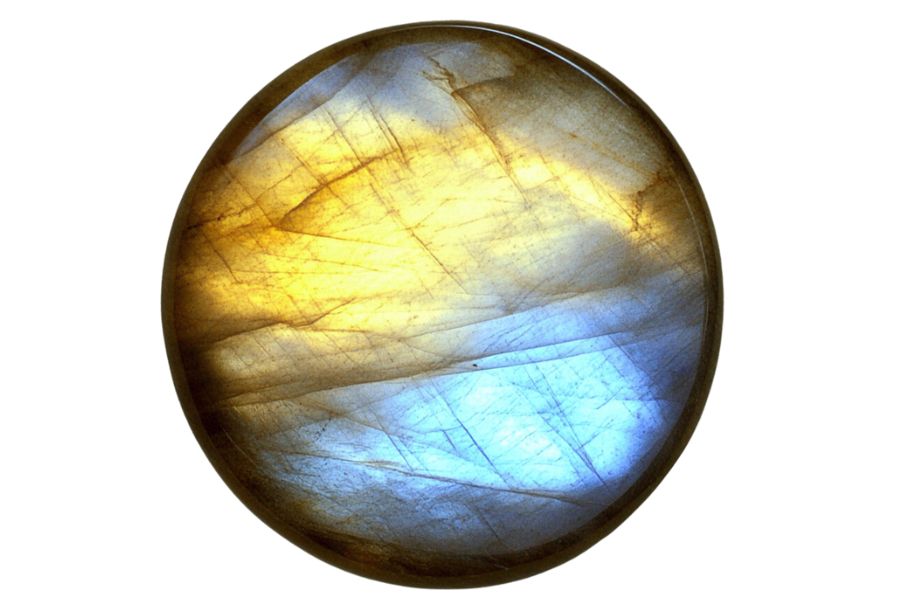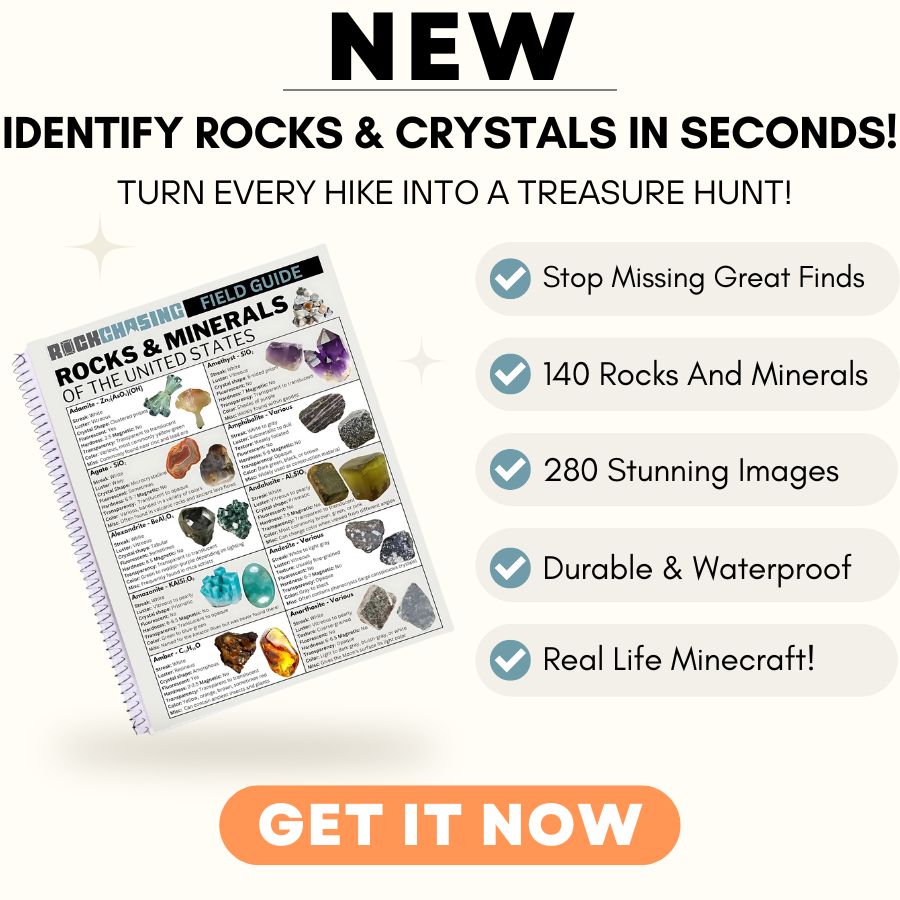New Hampshire’s rocky terrain holds many treasures for those who know where to look. Among these hidden gems is labradorite, a stunning stone that many rock enthusiasts love to collect. The state’s geological history has created perfect conditions for this mineral to form.
Finding labradorite in New Hampshire can be an exciting adventure. Whether you’re a seasoned collector or just starting out, the thrill of spotting this stone in its natural setting is unmatched. The search often takes you through beautiful landscapes and off the beaten path.
This guide will show you where to start your labradorite hunting journey in the state. We’ll explore different areas where your chances of success are highest. So, get ready to discover one of nature’s most beautiful creations right here in New Hampshire.
How Labradorite Forms Here
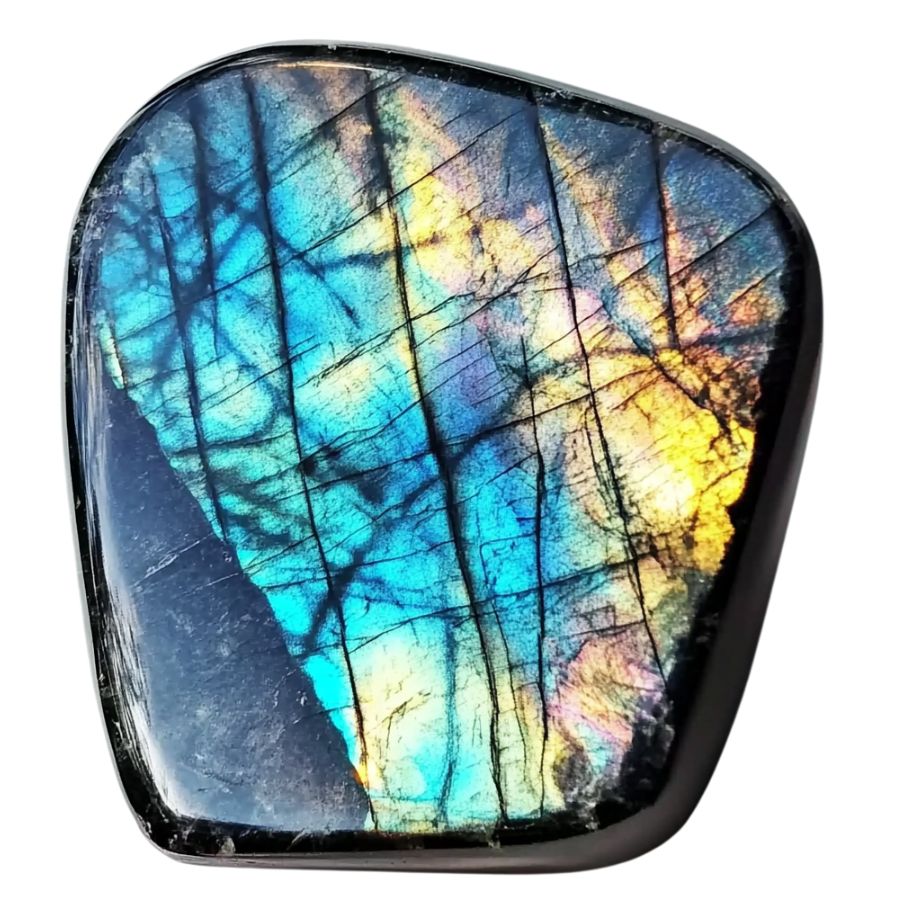
Labradorite forms deep underground when magma slowly cools and crystallizes. The process happens when different minerals separate while cooling, creating thin layers stacked on top of each other. These layers have slightly different chemical makeups, usually about 1 micron thick.
When light hits these layers, it creates that stunning blue-green flash we love, called labradorescence. The stone starts out as a mix of calcium, sodium, aluminum, and silicate minerals.
As it cools, these minerals organize themselves into this layered pattern, which happens most often in places where magma intrudes into the surrounding rock. It’s like nature’s own light show, frozen in stone.
Types of Labradorite
Labradorite comes in several distinct varieties. Each type exhibits special qualities that make it sought after by collectors.
Blue Labradorite
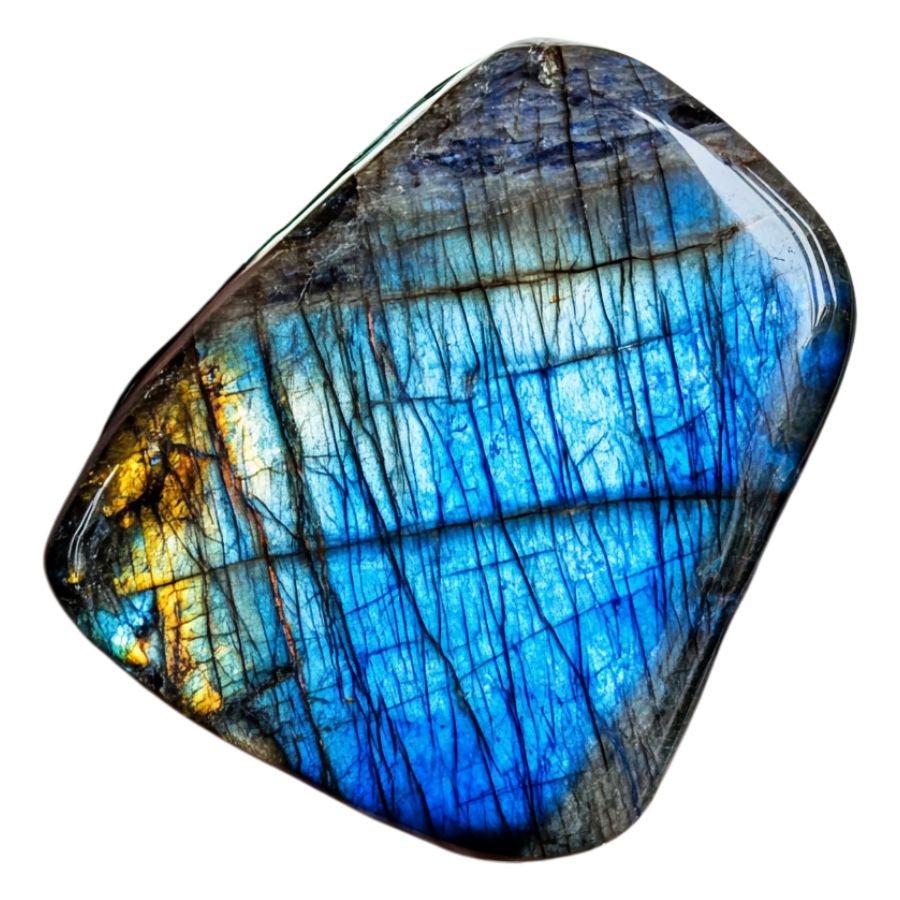
Blue Labradorite stands out for its remarkable blue iridescence against a dark gray or black background. When light hits the stone’s surface, it creates a stunning display of electric blue flashes, sometimes accompanied by hints of green or violet.
The blue flashes appear most vivid when viewing the stone from specific angles, creating an almost magical transformation as you rotate it. This effect is often compared to the ethereal beauty of the Northern Lights.
Exceptional specimens display an intense, electric blue flash that covers a large portion of the stone’s surface. Some pieces also show secondary colors like aqua or sea green, adding depth to their visual appeal. The contrast between the dark base and bright blue flashes makes each piece unique.
Golden Labradorite
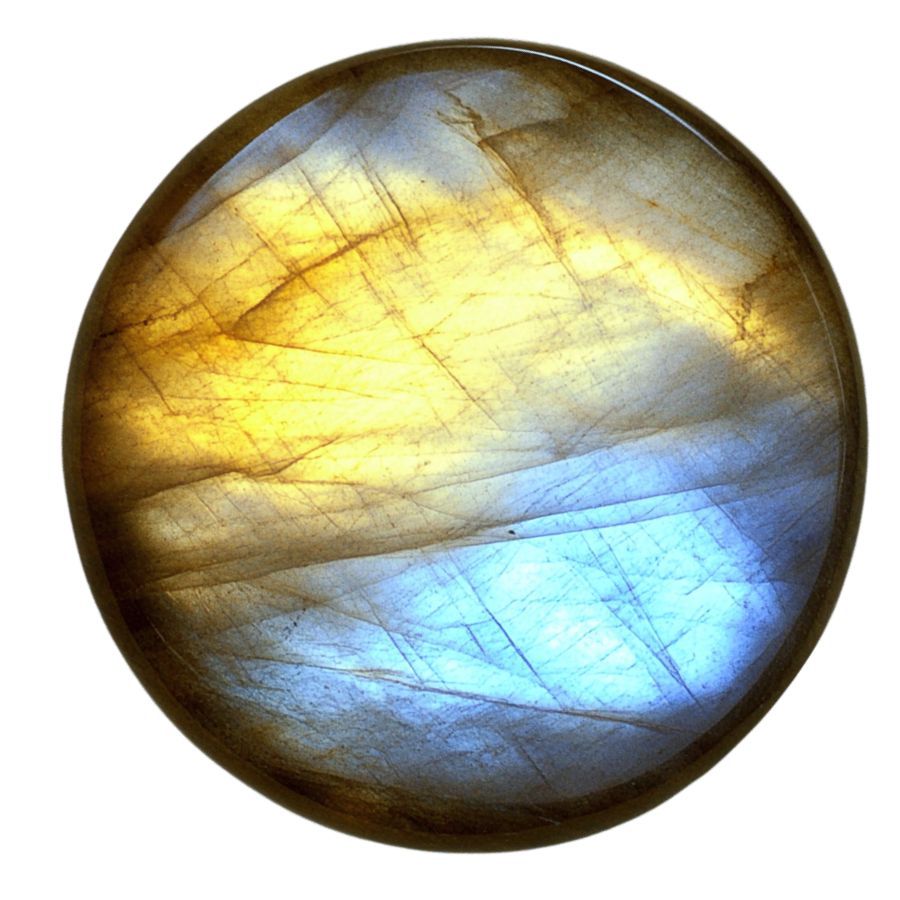
Golden Labradorite displays a mesmerizing golden-yellow sheen that sets it apart from other varieties. The stone’s surface exhibits brilliant flashes of gold and amber, creating a warm, sun-like glow that seems to emanate from within. These golden rays often appear alongside subtle hints of green or champagne colors.
What makes Golden Labradorite special is its ability to display multiple golden hues simultaneously. Some specimens show a range of colors from pale yellow to deep amber, creating a multi-dimensional effect.
The golden flash can vary in intensity and coverage, with premium specimens showing broad, bright areas of gold schiller.
Rainbow Moonstone
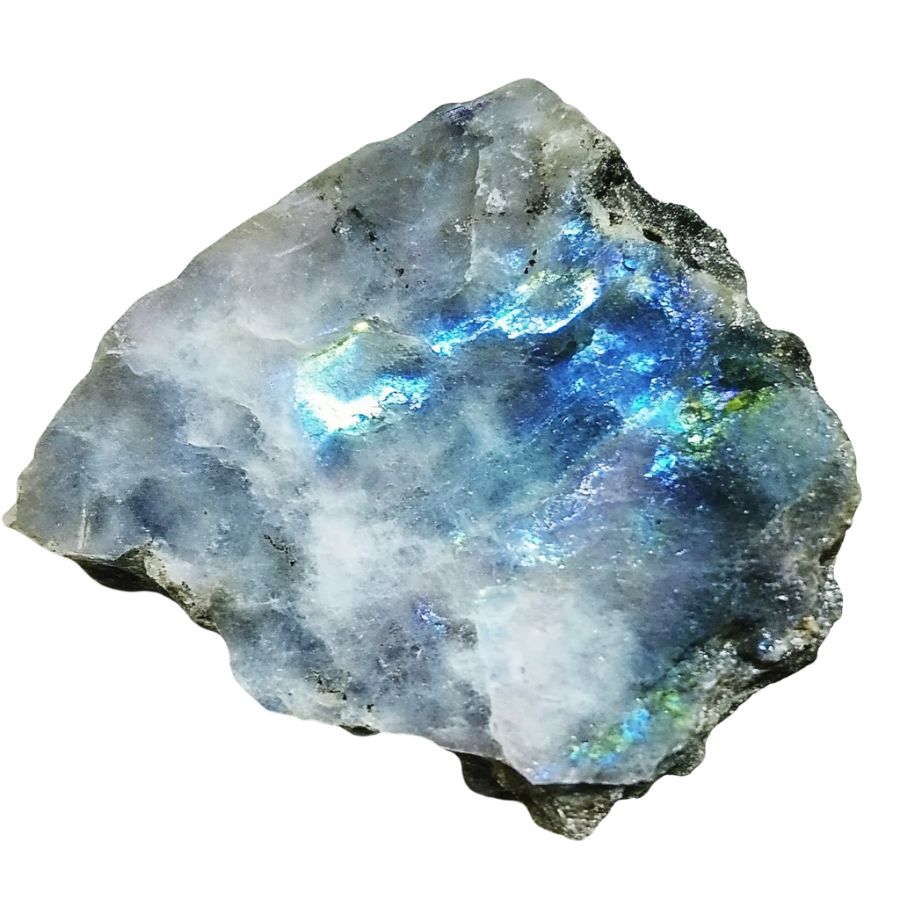
Rainbow Moonstone Labradorite exhibits a distinctive white or colorless base with an enchanting blue sheen that floats across its surface. Blue sheen is often accompanied by flashes of other colors, including pink, yellow, and green.
This stone’s most captivating feature is how its colors appear to float just beneath the surface, creating an almost three-dimensional effect. As light moves across the stone, these colors shift and change, revealing new patterns and combinations. This creates a dynamic display that seems to change with every movement.
The stone’s transparency can range from translucent to semi-transparent, with the most valued pieces showing excellent clarity beneath their shimmering surface.
Spectrolite
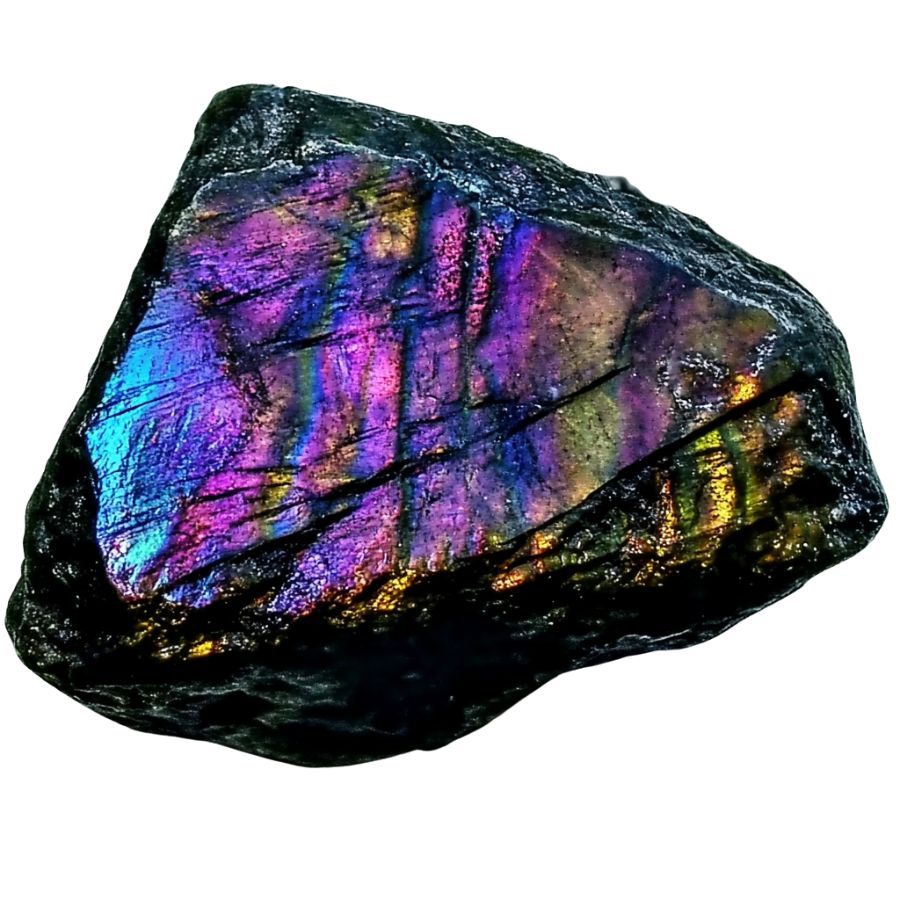
Spectrolite reigns as the most dramatic member of this stone family, with its distinctive jet-black base setting it apart from other varieties.
What makes it truly special is that premium specimens can simultaneously display the complete spectrum of colors, from deep indigo to bright orange, emerald green to royal purple, all in a single piece.
The finest specimens possess what experts call “full-face color,” meaning the vibrant display covers most of the stone’s surface rather than appearing in small patches.
This characteristic, combined with its remarkable color intensity, has earned Spectrolite its reputation as the most visually impressive variety of all similar stones.
Transparent Labradorite
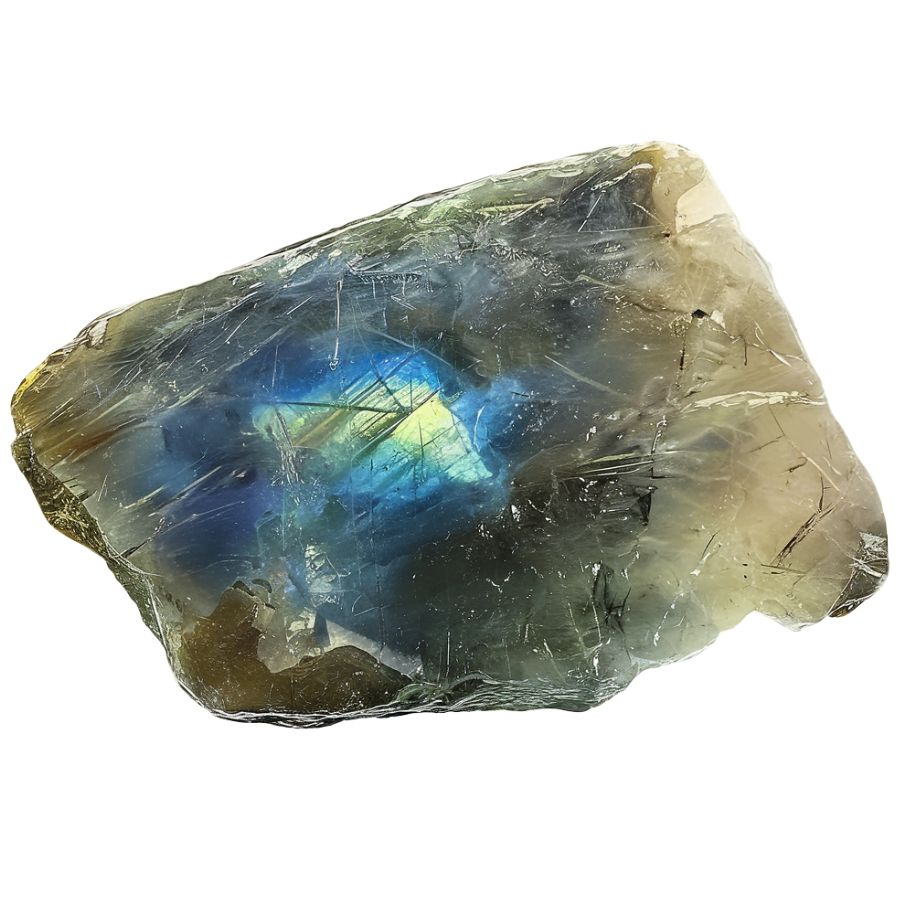
Transparent Labradorite exhibits a remarkable clarity that separates it from its opaque cousins. Crystal-clear areas allow light to pass through, creating an exceptional display of blue flashes against the transparent background.
Natural specimens often show areas of both transparency and translucency. Beautiful color changes occur as you move this stone, with the transparent areas revealing subtle blue sheens that seem to float within the crystal.
Some pieces display additional colors like soft greens or pale yellows, though the blue flash remains dominant.
Remarkable clarity combines with the signature color play to create stones that appear almost liquid-like.
Andesine-Labradorite
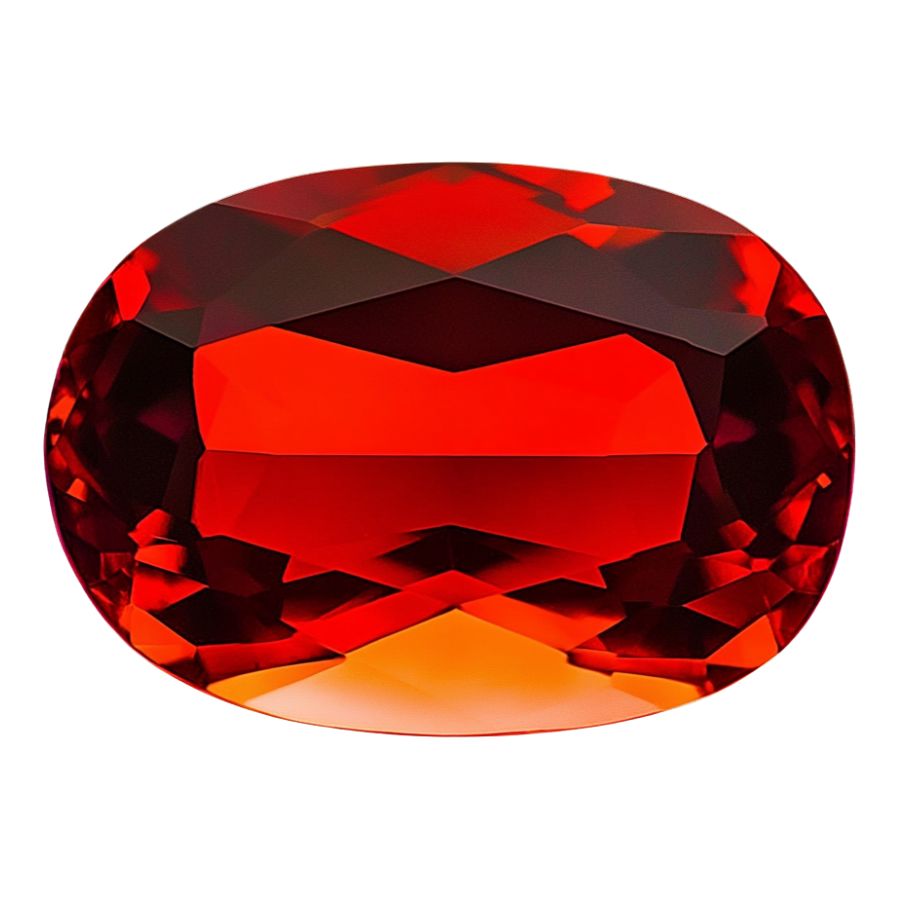
Reddish-orange hues dominate Andesine-Labradorite’s appearance, creating a warm and inviting glow. Delicate green and yellow streaks often appear throughout the stone, adding complexity to its color palette.
Metallic sparkles dance across the surface, different from the typical labradorescent effect. Fresh discoveries of this relatively new gemstone continue to reveal new color combinations.
Striking color variations appear in high-quality pieces, ranging from deep red to bright orange. Many specimens show subtle color zoning, where different hues blend together in distinct patterns.
Black Labradorite
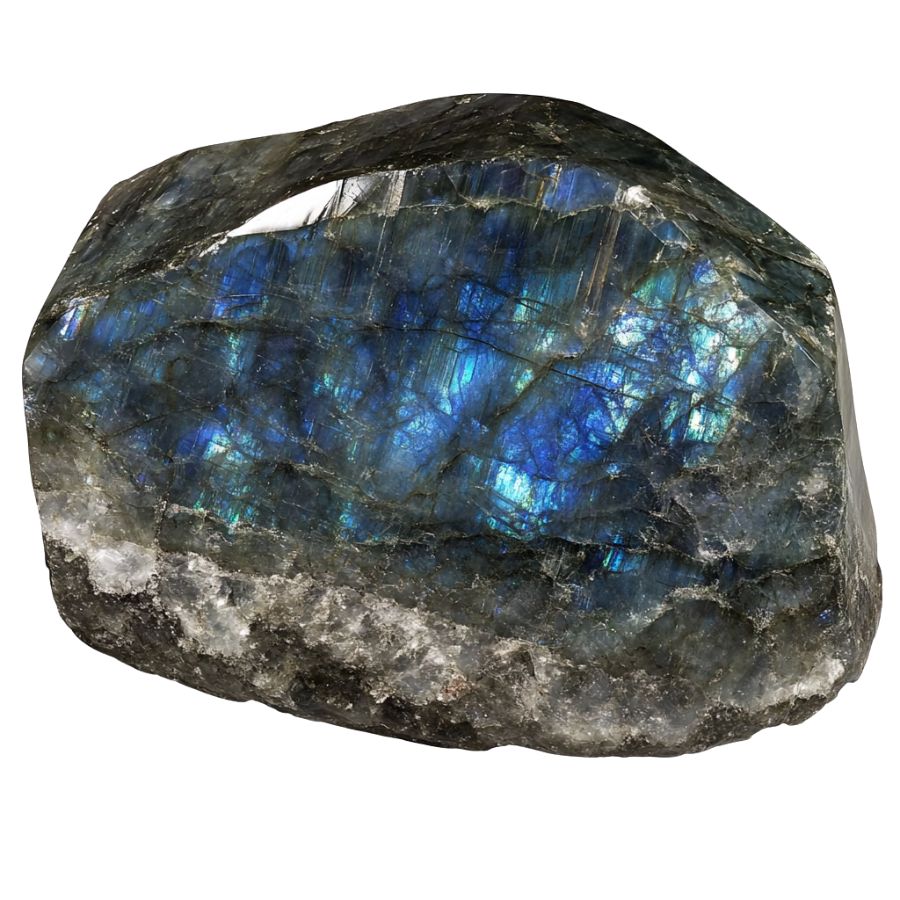
Black Labradorite presents a dramatic dark canvas that emphasizes its colorful display. Bright flashes of color stand out dramatically against the deep black background, creating stunning visual contrast.
Most specimens show multiple colors at once, creating an eye-catching display. These color displays often include electric blues, emerald greens, and golden yellows, all visible simultaneously.
Natural sunlight brings out the boldest displays, while artificial light can highlight subtle color variations. Some specimens also show interesting patterns in how the colors are distributed.
Brown Labradorite

Brown Labradorite features rich earth tones ranging from deep chocolate to warm amber. Peach and orange undertones often appear throughout the stone, creating depth and dimension.
Multiple color zones create interesting patterns within each stone. These patterns can include stripes, swirls, or mottled areas that combine different brown and orange hues.
Subtle iridescence sometimes appears on the surface, adding an unexpected shimmer to the earthy colors. This effect is more subdued than in other varieties but adds an interesting dimension to the stone’s appearance.
What Rough Labradorite Look like?
Labradorite in its rough form can be tricky to spot, but once you know what to look for, it becomes easier. Here’s how to recognize this fascinating stone in its natural state.
Look for the Signature Flash
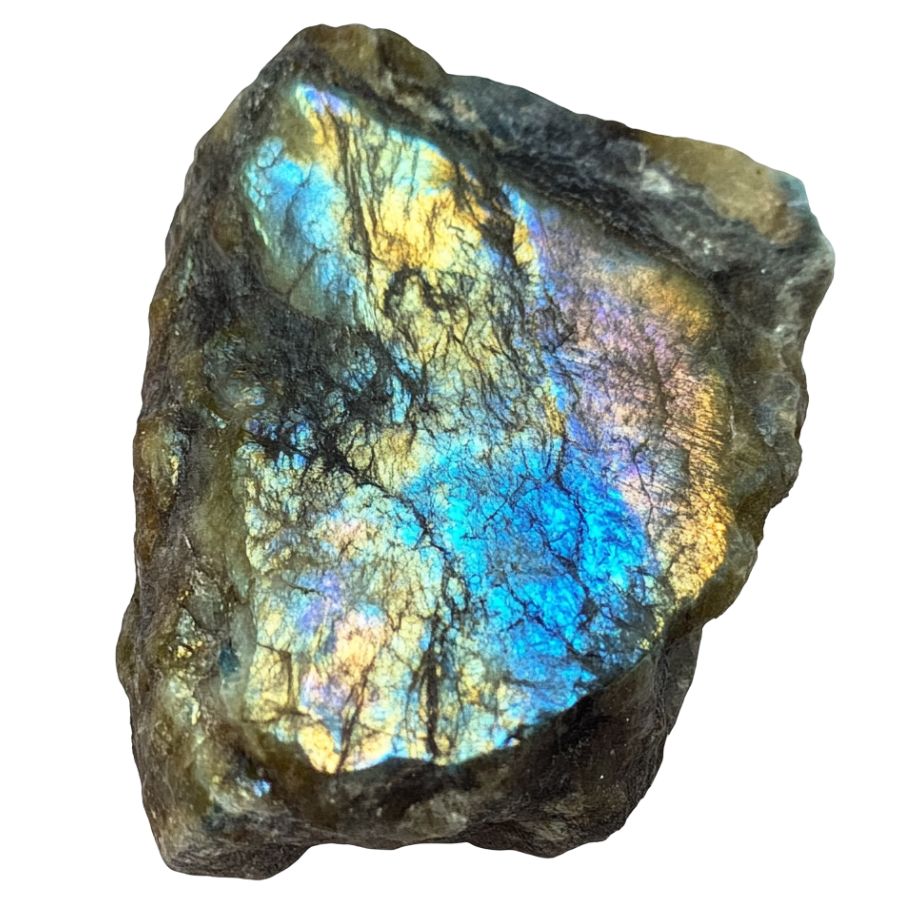
Raw labradorite often shows patches of its famous iridescent flash, even when unpolished. Check dark gray or black areas under direct sunlight – you might catch glimpses of blue, green, or gold shimmer.
Sometimes, you’ll need to wet the surface slightly to see this effect better. The flash isn’t always obvious but usually appears as scattered patches.
Check the Base Color and Texture
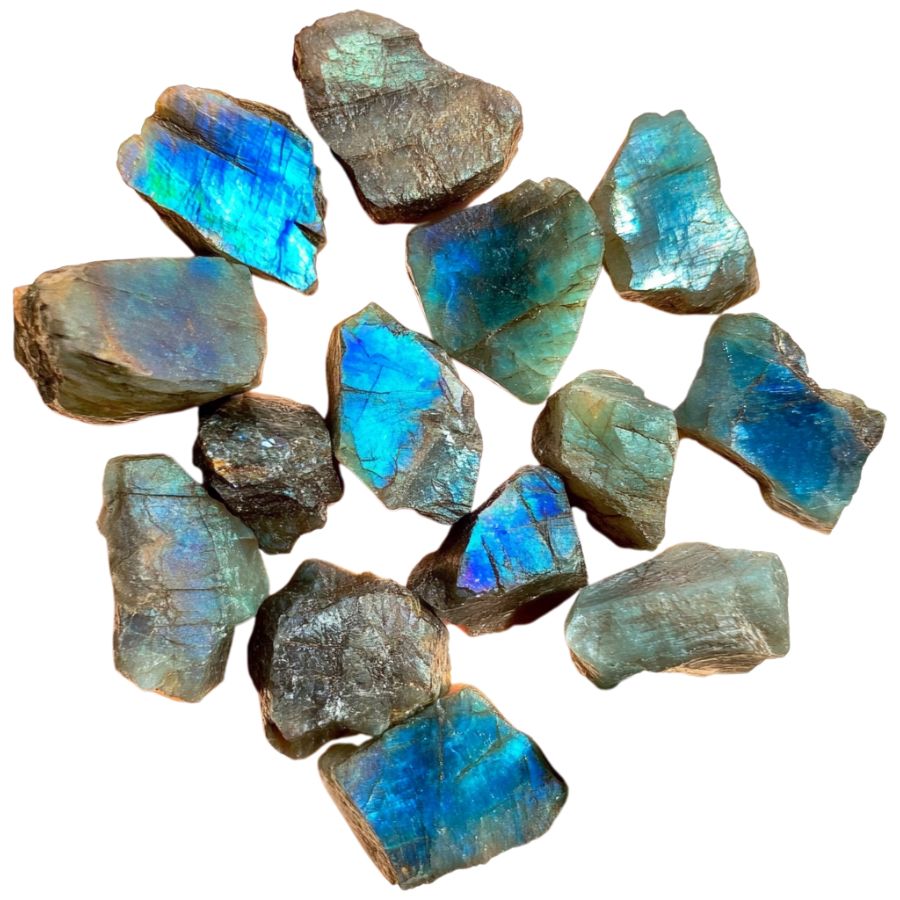
The main body should be dark gray to black, sometimes with a slight greenish tinge. The surface feels smooth but not glossy, similar to unpolished glass.
Look for a slightly bumpy texture with occasional flat surfaces. Fresh breaks will show a more uniform color than weathered surfaces.
Assess the Hardness and Breakage

Try scratching the surface with a copper penny – it shouldn’t leave a mark. The stone often breaks with smooth, flat surfaces at distinct angles.
You’ll notice these angular breaks are pretty characteristic, unlike random rough breaks in common rocks.
Test the Translucency
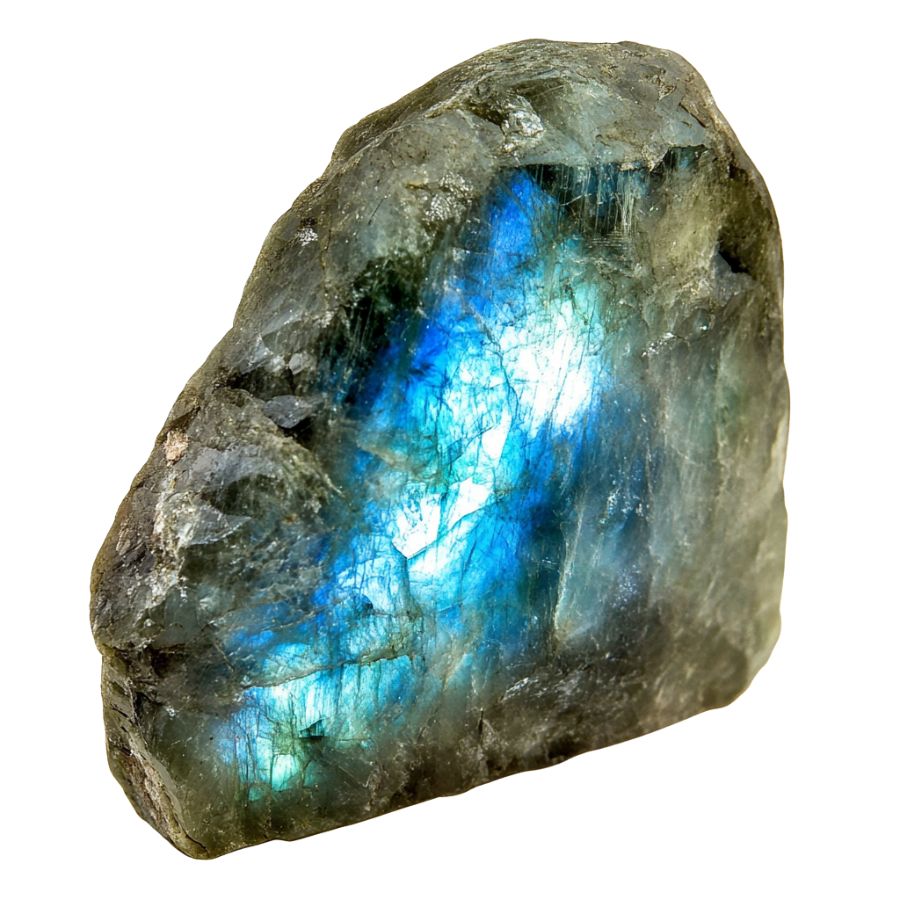
Hold a thin edge up to strong light. Raw labradorite should show some translucency, appearing slightly cloudy rather than completely opaque. The edges might look slightly whitish or gray when light passes through. Thicker pieces will appear darker and more opaque.
A Quick Request About Collecting
Always Confirm Access and Collection Rules!
Before heading out to any of the locations on our list you need to confirm access requirements and collection rules for both public and private locations directly with the location. We haven’t personally verified every location and the access requirements and collection rules often change without notice.
Many of the locations we mention will not allow collecting but are still great places for those who love to find beautiful rocks and minerals in the wild without keeping them. We also can’t guarantee you will find anything in these locations since they are constantly changing.
Always get updated information directly from the source ahead of time to ensure responsible rockhounding. If you want even more current options it’s always a good idea to contact local rock and mineral clubs and groups
Tips on Where to Look
Labradorite isn’t super common in everyday places, but with some smart searching, you can find it. Here’s where you should look:
Metamorphic Rock Formations
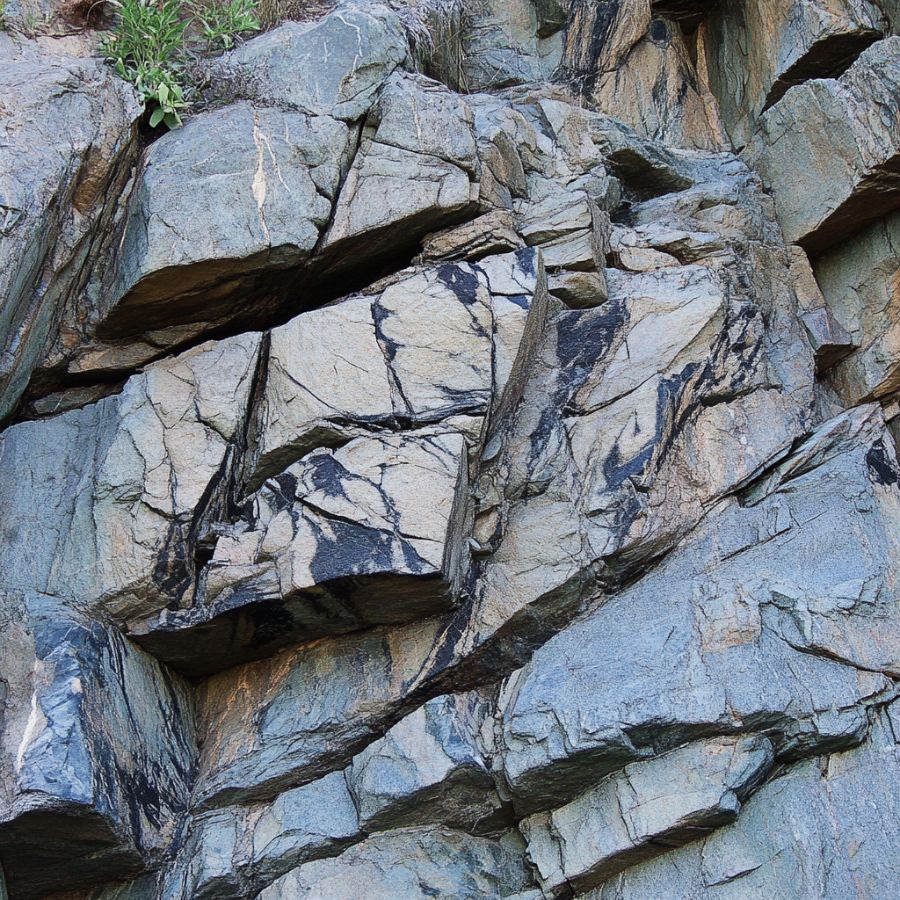
Look for dark-colored rock outcrops. Spot areas with lots of feldspar minerals. Check exposed cliff faces. Sometimes, when the sun hits just right, you might catch that signature blue flash from larger formations that’s a dead giveaway for labradorite presence.
Glacial Deposits
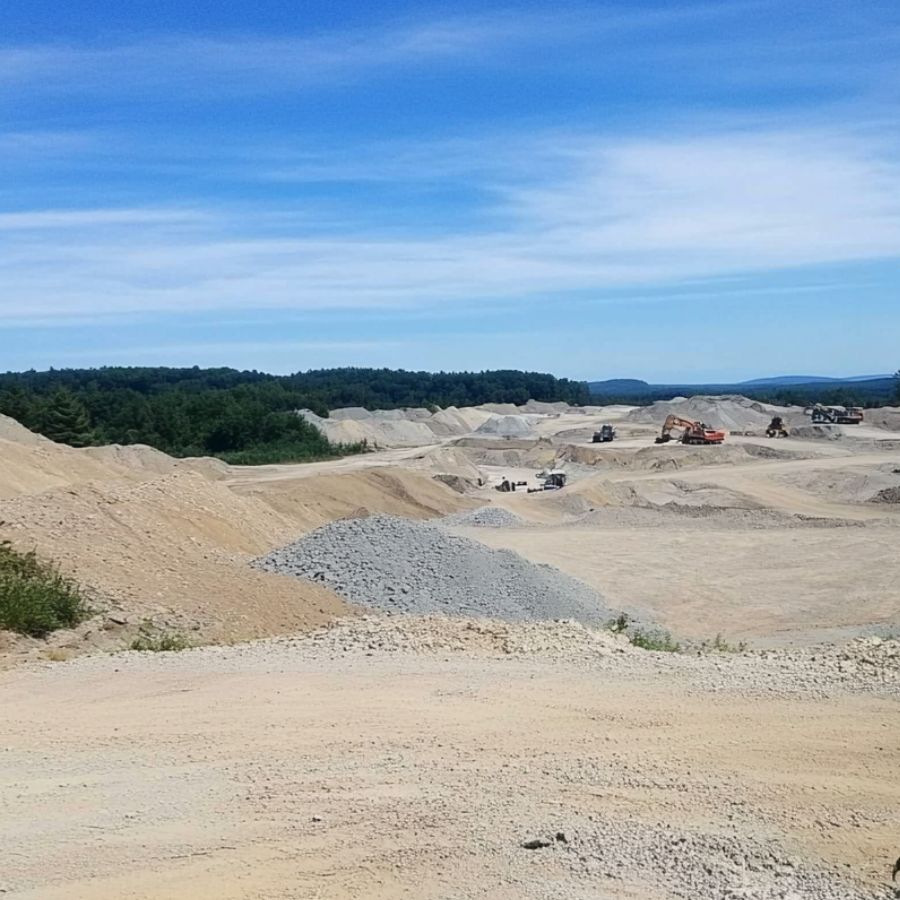
Search river beds after glacial deposits. Check gravel pits near old glacial paths. Look for smooth, dark gray stones mixed with other rocks. These deposits often contain chunks of labradorite that have broken off from larger formations and been carried downstream over thousands of years.
Mining Tailings
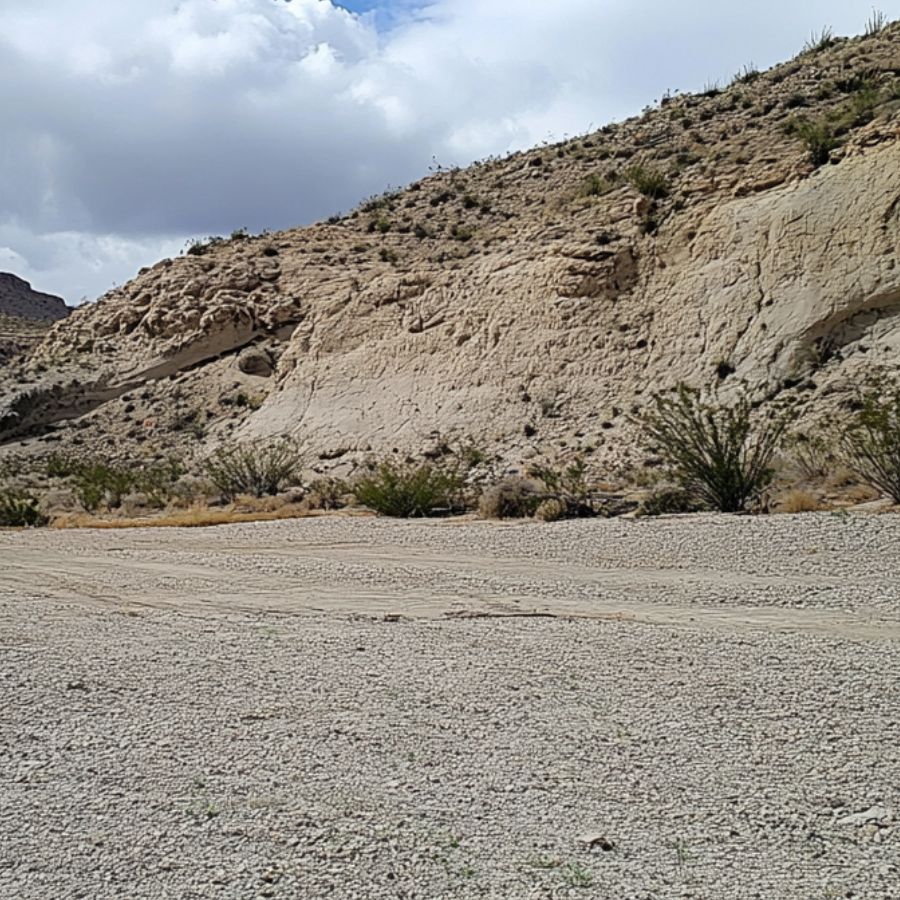
Visit abandoned feldspar mines. Check mine dump areas. Dig through tailings piles. Look for flat, shiny surfaces. The waste rock from old mining operations often contains overlooked pieces of labradorite that weren’t considered valuable during active mining periods but are perfect for collectors.
Stream Beds
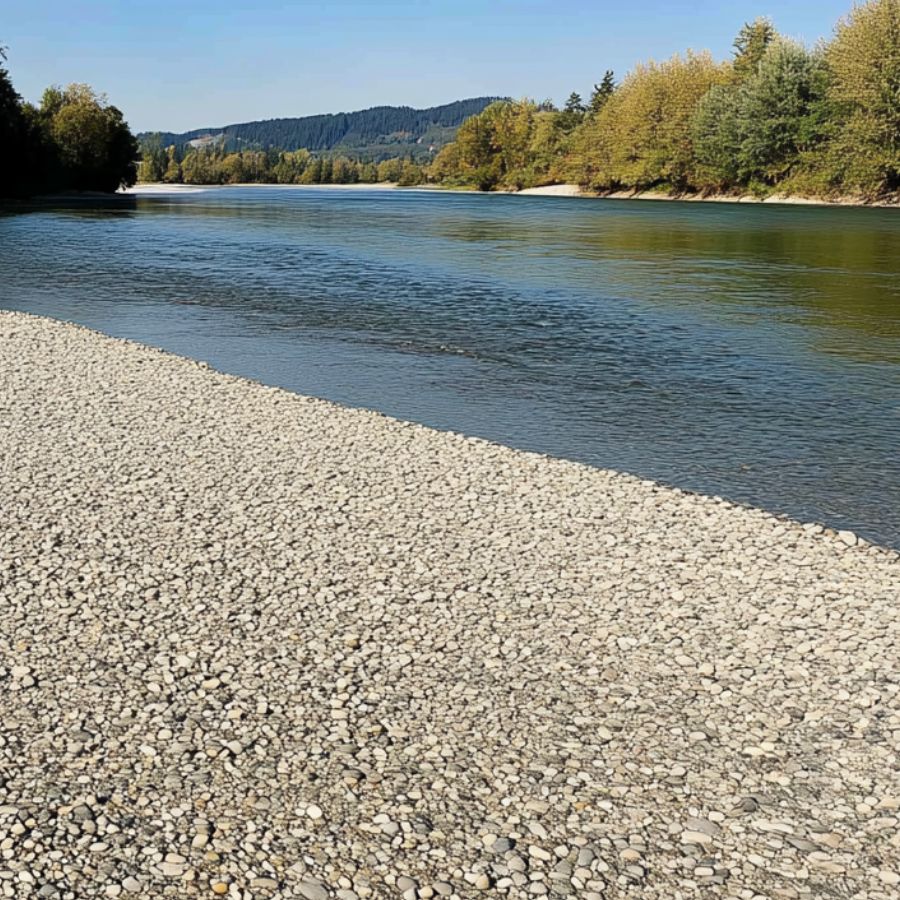
Search clear-water streams. Look under water-worn rocks. Check gravel bars after rain. Spot dark, plate-like stones. The constant water movement often exposes and polishes these stones, making them easier to identify when wet.
Some Great Places To Start
Here are some of the better places in the state to start looking for Labradorite:
Always Confirm Access and Collection Rules!
Before heading out to any of the locations on our list you need to confirm access requirements and collection rules for both public and private locations directly with the location. We haven’t personally verified every location and the access requirements and collection rules often change without notice.
Many of the locations we mention will not allow collecting but are still great places for those who love to find beautiful rocks and minerals in the wild without keeping them. We also can’t guarantee you will find anything in these locations since they are constantly changing.
Always get updated information directly from the source ahead of time to ensure responsible rockhounding. If you want even more current options it’s always a good idea to contact local rock and mineral clubs and groups
Lincoln Area
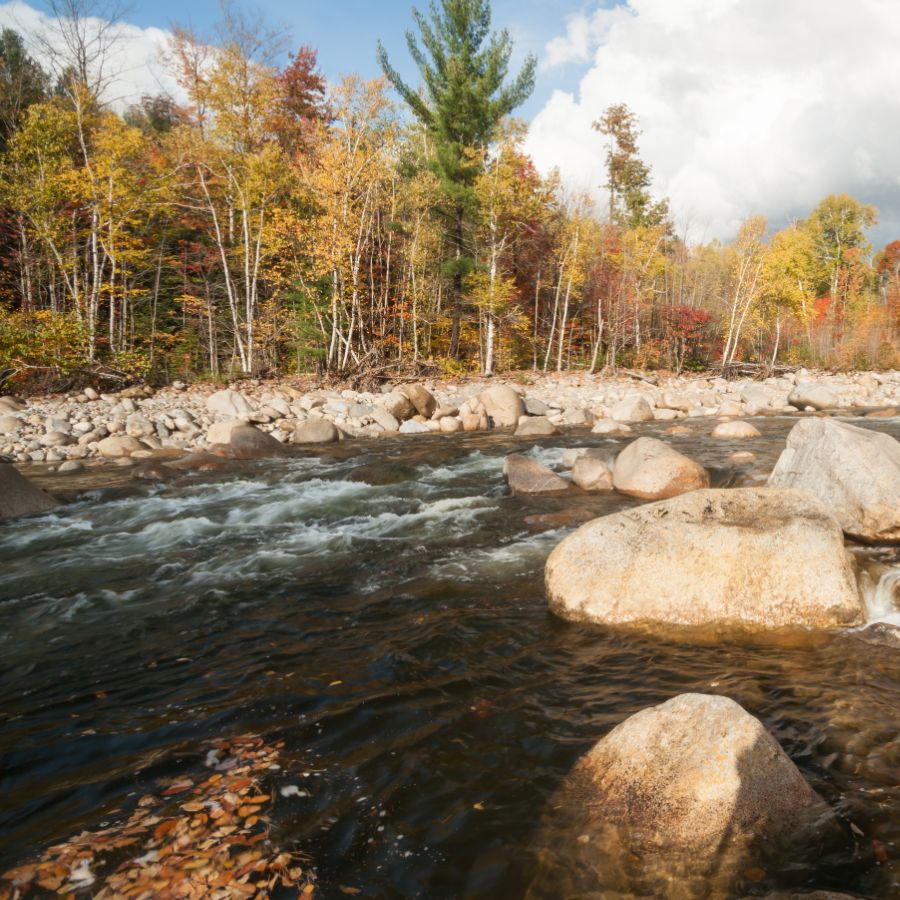
Lincoln is a town renowned for its rich geological features and mineral diversity. It’s inside the White Mountain National Forest, making it a great spot for outdoor adventures. The area has many different rock types, including metamorphic and igneous rocks.
Labradorite can be found here among the town’s rich mineral mix. Rock collectors often visit the Lincoln Woods Trailhead to search for this special mineral. The trail leads to riverbeds where water has exposed various minerals.
Another good spot is Kinsman Notch, with its rough terrain and many rock piles. Here, labradorite might be hiding in exposed bedrock or rocky slopes. Franconia Notch State Park nearby also has some good rock outcrops where labradorite specimens might be found.
Mill Mountain
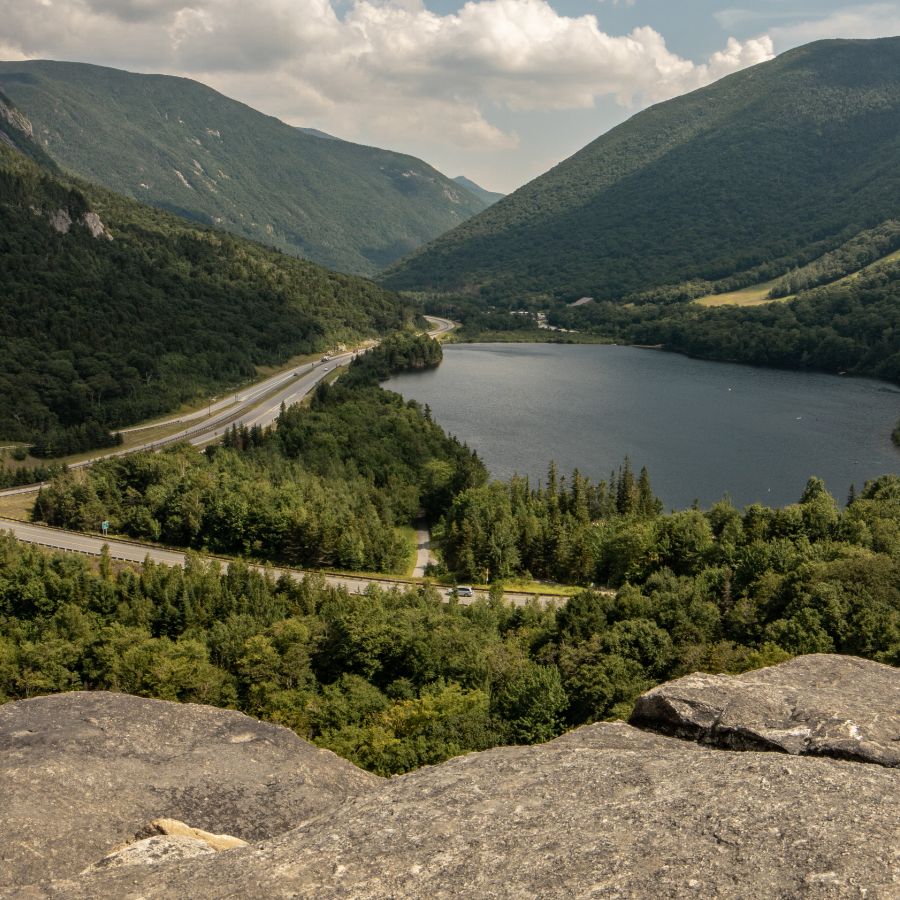
Mill Mountain is located in Stark, Coös County. The mountain stands out with its rough terrain and rocky slopes. It’s part of the northern White Mountains region, known for its mineral wealth.
Labradorite specimens can be discovered among the mountain’s diverse mineral offerings. The eastern slopes of Mill Mountain are especially good for finding this mineral. Here, natural erosion has exposed rock formations containing labradorite.
Rock outcrops scattered across the mountain often show visible mineral veins where labradorite might be hiding. Stream beds around Mill Mountain are also worth checking. Water carries mineral fragments downstream, making them easier to spot and collect.
Rockingham Area
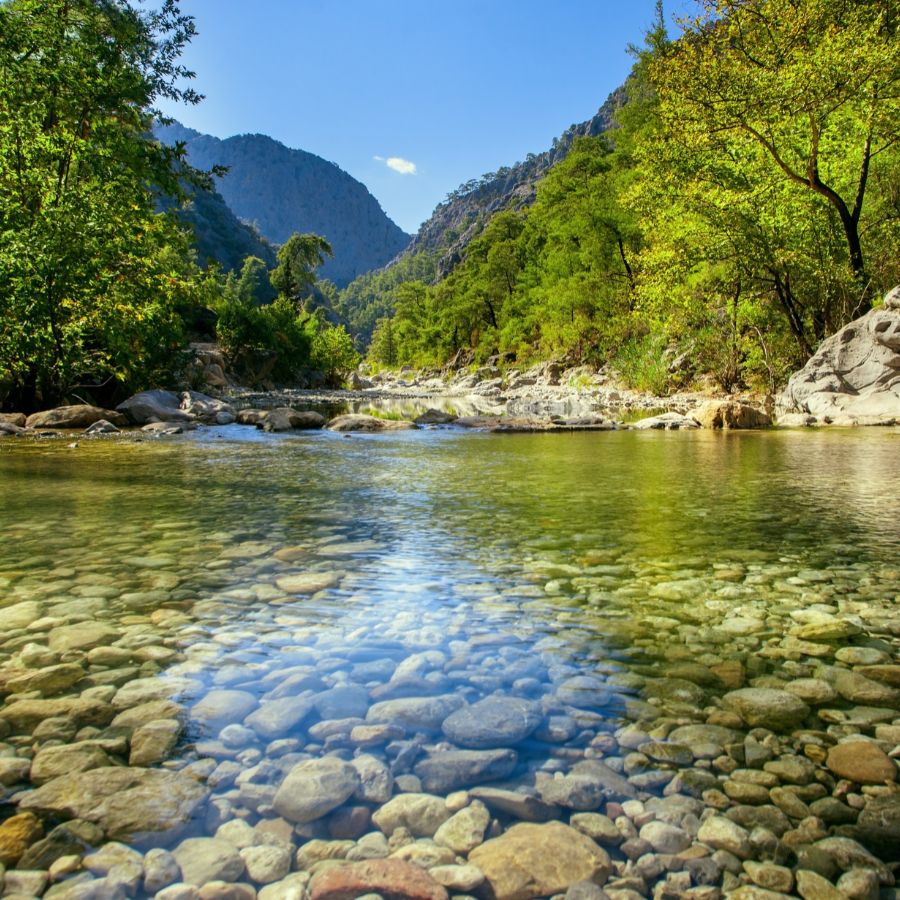
Rockingham County sits in southeastern New Hampshire. This area features a mix of coastal plains, hills, and old volcanic formations.
The Pawtuckaway Mountains in this county are special because they formed from ancient volcanic activity 110-130 million years ago. These mountains have a rare “ring dike” structure, circles of igneous rock that formed when volcanoes collapsed.
Labradorite can be found in these mountains, especially in the dark diabase rocks that make up the ring dike. The best place to look is Pawtuckaway State Park in Nottingham. Hikers can access good collecting spots via the North and South Mountain trails in the park.
Glaciers also shaped this area thousands of years ago, leaving behind unique land features. Besides labradorite, you might find amethyst, rose quartz, and smoky quartz in places like Raymond and Newmarket.
Campton Area
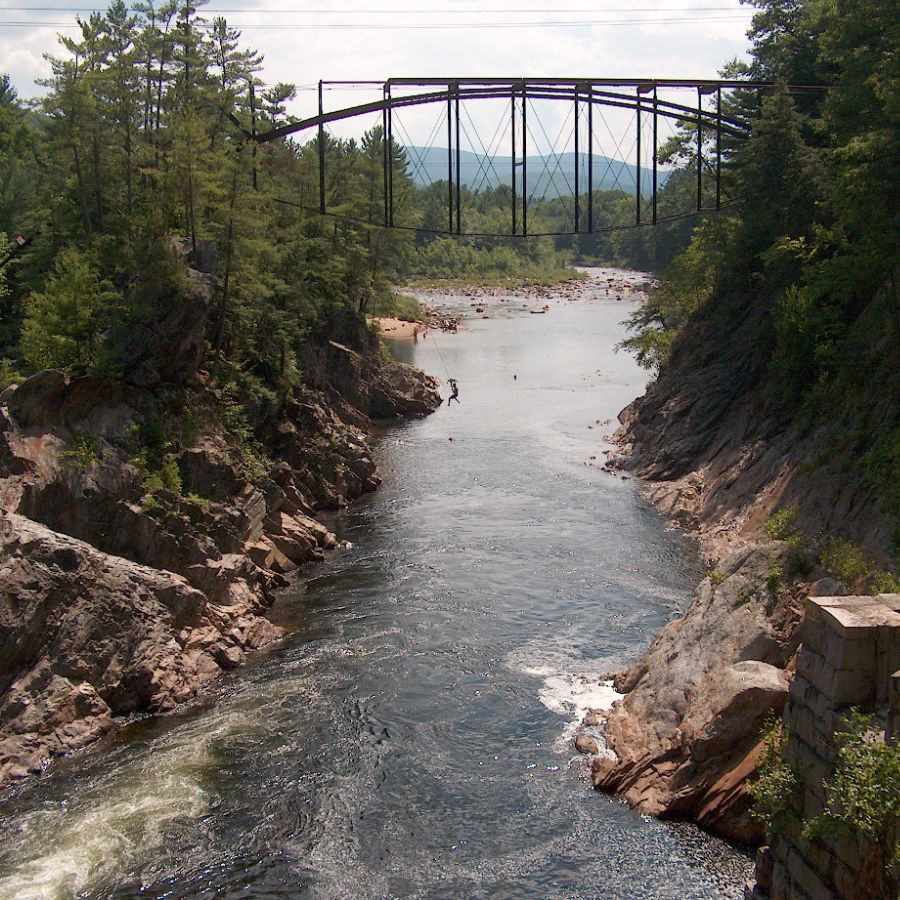
Campton is a town in Grafton County at the entrance to the White Mountains. Geologists find Campton interesting because it’s part of an area with ancient volcanic rocks. These rocks, called the White Mountain plutonic-volcanic series, contain many different minerals.
Labradorite shows up in several places around Campton. One good spot to look is near Livermore Falls, where this mineral forms within local rock layers. Another promising area is around Campton Falls, especially along the Beebe River. The riverbanks have metamorphic rocks that sometimes contain labradorite.
Both these locations are easy to reach and give collectors a chance to find specimens in their natural setting. The town’s geology also supports other interesting minerals. Veins of pegmatite rock in the area often contain beryl, garnet, and smoky quartz, making Campton a great destination for rock collectors.
Ruggles Mine
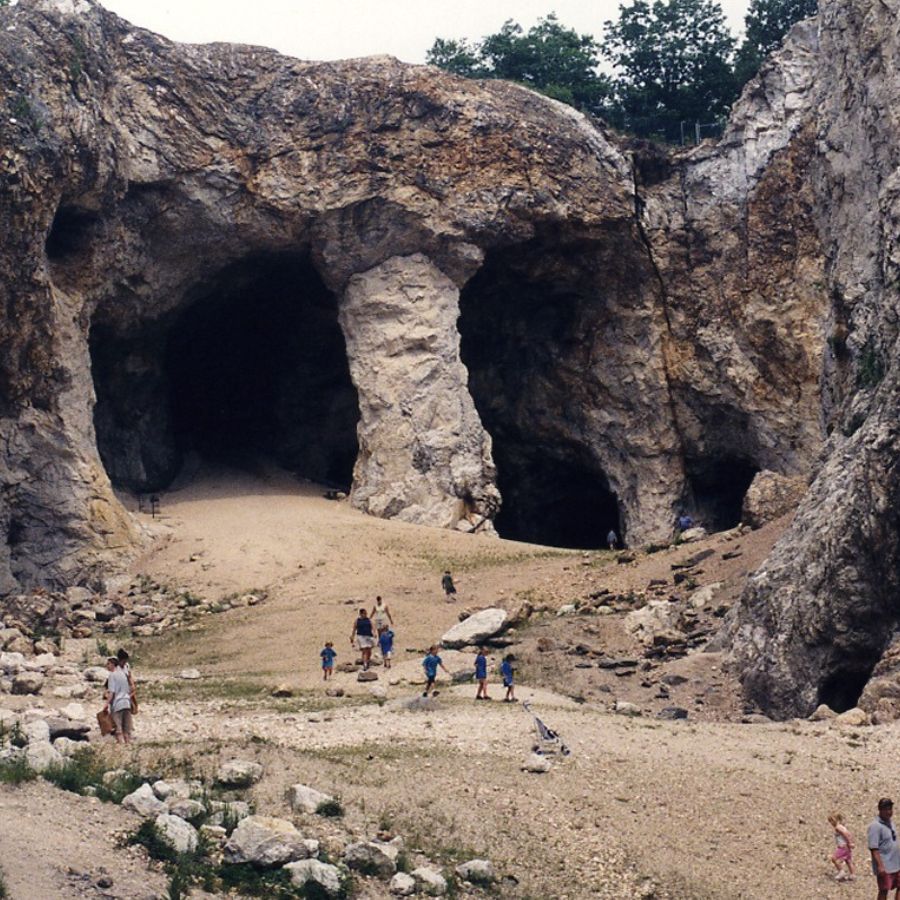
Ruggles Mine sits on top of Isinglass Mountain. This historic open-pit mine was the first commercial mica mine in the United States, started in the early 1800s by Sam Ruggles. Today, it’s famous among rock collectors for its amazing variety of minerals.
The mine formed about 350-400 million years ago during the Devonian period. It contains a complex system of granite pegmatite. Over 150 different minerals have been found here, including labradorite.
The upper dumps of the mine are great places to search for labradorite. These areas contain leftover rock from earlier mining and are regularly maintained by the owners. Fresh digging often uncovers overlooked minerals.
The walls of the main quarry also yield labradorite crystals, especially in areas rich with feldspar. Daylight helps spot labradorite’s special shine. Besides labradorite, visitors might find mica, beryl, amethyst, and various quartz varieties.
Places Labradorite has been found by County
After discussing our top picks, we wanted to discuss the other places on our list. Below is a list of the additional locations along with a breakdown of each place by county.
| County | Location |
| Carroll | Moat Mountain Mineral Site |
| Merrimack | Palermo No. 1 Mine |
| Strafford | Parker Mountain Mine |
| Multiple | White Mountain National Forest |
| Carroll | Conway Granite Quarry |
| Grafton | Lisbon |
| Grafton | North Groton |

